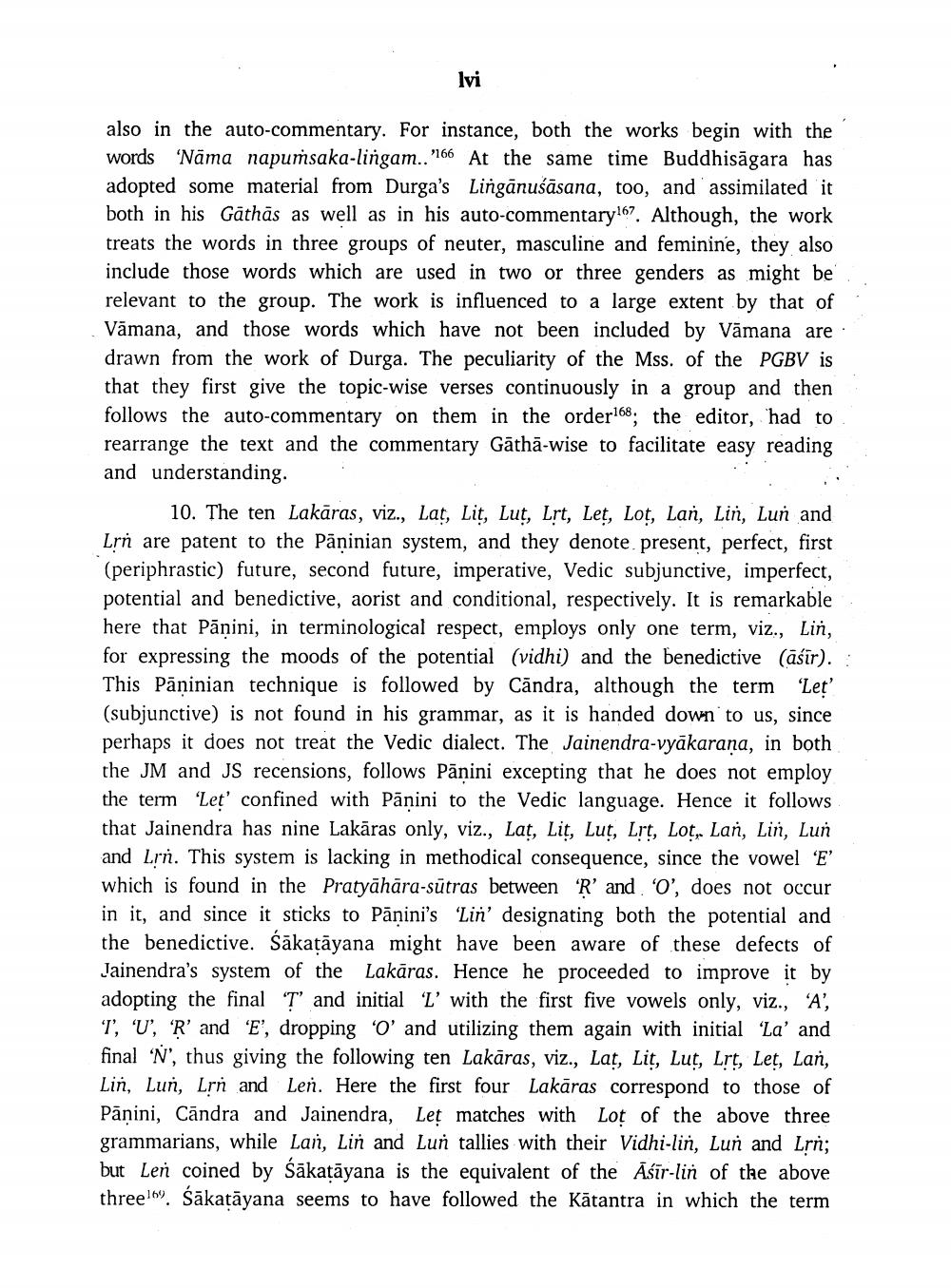________________ lvi also in the auto-commentary. For instance, both the works begin with the words "Nama napussaka-lingam.. '166 At the same time Buddhisagara has adopted some material from Durga's Linganusasana, too, and assimilated it both in his Gathas as well as in his auto-commentary167. Although, the work treats the words in three groups of neuter, masculine and feminine, they also include those words which are used in two or three genders as might be relevant to the group. The work is influenced to a large extent by that of Vamana, and those words which have not been included by Vamana are drawn from the work of Durga. The peculiarity of the Mss. of the PGBV is that they first give the topic-wise verses continuously in a group and then follows the auto-commentary on them in the order168; the editor, had to rearrange the text and the commentary Gatha-wise to facilitate easy reading and understanding. 10. The ten Lakaras, viz., Lat, Lit, Lut, Lrt, Let, Lot, Lan, Lin, Lun and Lrn are patent to the Paninian system, and they denote present, perfect, first (periphrastic) future, second future, imperative, Vedic subjunctive, imperfect, potential and benedictive, aorist and conditional, respectively. It is remarkable here that Panini, in terminological respect, employs only one term, viz., Lin, for expressing the moods of the potential (vidhi) and the benedictive (asir). This Paninian technique is followed by Candra, although the term 'Let' (subjunctive) is not found in his grammar, as it is handed down to us, since perhaps it does not treat the Vedic dialect. The Jainendra-vyakarana, in both the JM and JS recensions, follows Panini excepting that he does not employ the term 'Let' confined with Panini to the Vedic language. Hence it follows that Jainendra has nine Lakaras only, viz., Lat, Lit, Lut, Lrt, Lot, Lan, Lin, Lun and Lrn. This system is lacking in methodical consequence, since the vowel 'E' which is found in the Pratyahara-sutras between 'R' and 'O', does not occur in it, and since it sticks to Panini's 'Lin' designating both the potential and the benedictive. Sakatayana might have been aware of these defects of Jainendra's system of the Lakaras. Hence he proceeded to improve it by adopting the final 'T' and initial 'L' with the first five vowels only, viz., 'A', T', 'U', 'R' and 'E', dropping 'O' and utilizing them again with initial 'La' and final 'N', thus giving the following ten Lakaras, viz., Lat, Lit, Lut, Lrt, Let, Lan, Lin, Lun, Lrn and Len. Here the first four Lakaras correspond to those of Panini, Candra and Jainendra, Let matches with Lot of the above three grammarians, while Lai, Lin and Lun tallies with their Vidhi-lin, Lun and Lrn; but Len coined by sakatayana is the equivalent of the Asur-lin of the above three?h%. Sakatayana seems to have followed the Katantra in which the term




